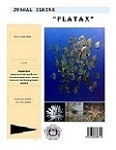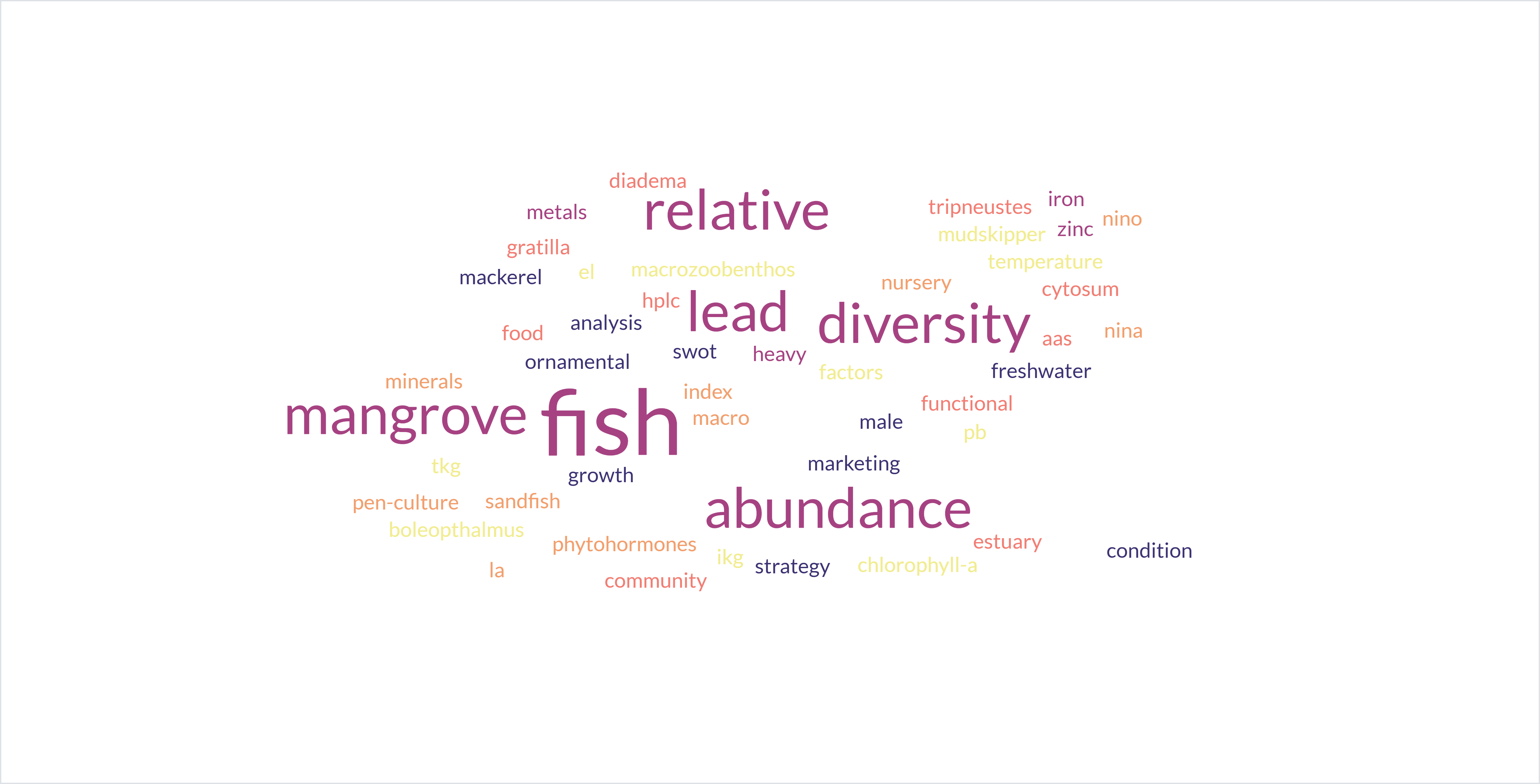A New and Practical Method for Measuring Sponge Spicules
DOI:
https://doi.org/10.35800/jip.v11i2.47882Keywords:
Spicules; , sponges;, SEM;, Wallacea;, biomaterial;, sponge taxonomy;Abstract
Binocular light microscopy (BLM) is an excellent match for a scanning electron microscope (SEM) and a trinocular light microscope equipped with a micrometer (TLM). The practicality, user-friendliness, and short-time analysis of BLM make this method a good choice for spicule analysis. However, its effectiveness and accuracy are yet to be confirmed. This study aimed to validate the effectiveness of BLM by comparing its usefulness to both TLM and the gold standard methods. BLM was first subjected to measuring megascleres and microscleres of 2 sponges. Then, by using the If function built-in Excell and t-test in SPSS 16.0, the compatibility of BLM was evaluated against SEM by measuring the length of spicules from 4 Sangihe sponges and their counterpart species from different locations. Furthermore, the t-test analysis was used to validate the compatibility and effectiveness of our method to the TLM by measuring the spicules of four sponges. Both the F-function and the t-test analysis proved BLM was compatible with SEM with both measurements showing a perfect match for megascleres typed spicules of 4 compared sponges. This new technique also showed a perfect match with SEM (p = 0.367, t-test) and with TLM (p = 0.963, t-test).
Keywords: Spicules, sponges, SEM, Wallacea, biomaterial, sponge taxonomy
References
Acharya, K. P., & Pathak, S. (2019). Applied Research in Low-Income Countries: Why and How? Frontiers in Research Metrics and Analytics, 4(November). https://doi.org/10.3389/frma.2019.00003
Aizenberg, J., Weaver, J. C., Thanawala, M. S., Sundar, V. C., Morse, D. E., & Fratzl, P. (2005). Materials science: Skeleton of euplectella sp.: Structural hierarchy from the nanoscale to the macroscale. Science, 309(5732), 275–278. https://doi.org/10.1126/science.1112255
Alvarez, B., Soest, R. O. B. W. M. V. A. N., & Rutzler, K. (1998). A Revision of Axinellidae of the Central West Atlantic Region SMITHSONIAN CONTRIBUTIONS TO ZOOLOGY • NUMBER 598. 598.
Anđjus, S., Tubić, B., Ilić, M., Đuknić, J., Gačić, Z., & Paunović, M. (2016). Freshwater Sponges – Skeletal Structure Analysis Using Light Microscopy and Scanning Electron Microscopy. Water Research and Management, 6(2), 15–17. http://www.wrmjournal.com/index.php?option=com_content&view=article&id=353&Itemid=290
Balansa, W., Wodi, S. I. M., Rieuwpassa, F. J., & Ijong, F. G. (2020). Agelasines B, D and antimicrobial extract of a marine sponge Agelas sp. From Tahuna Bay, Sangihe Islands, Indonesia. Biodiversitas, 21(2), 699–706. https://doi.org/10.13057/biodiv/d210236
Bell, J. J. (2008). The functional roles of marine sponges. Estuarine, Coastal and Shelf Science, 79(3), 341–353. https://doi.org/10.1016/j.ecss.2008.05.002
Bell, J. J., & Smith, D. (2004). Ecology of sponge assemblages (Porifera) in the Wakatobi region, south-east Sulawesi, Indonesia: Richness and abundance. Journal of the Marine Biological Association of the United Kingdom, 84(3), 581–591. https://doi.org/10.1017/S0025315404009580h
Calcinai, B., Bastari, A., Bavestrello, G., Bertolino, M., Horcajadas, S. B., Pansini, M., Makapedua, D. M., & Cerrano, C. (2017). Demosponge diversity from North Sulawesi, with the description of six new species. ZooKeys, 2017(680), 105–150. https://doi.org/10.3897/zookeys.680.12135
Cunningham, B. A. (1984). of Acclimation: 304(July), 1–3.
Eder, C., Proksch, P., Wray, V., Van Soest, R. W. M., Ferdinandus, E., Pattisina, L. A., & Sudarsono. (1999). New bromopyrrole alkaloids from the Indopacific sponge Agelas nakamurai. Journal of Natural Products, 62(9), 1295–1297. https://doi.org/10.1021/np990071f
FAO. (2020). Identification of sponge species. 679849.
Granito, R. N., Custódio, M. R., & Rennó, A. C. M. (2017). Natural marine sponges for bone tissue engineering: The state of art and future perspectives. Journal of Biomedical Materials Research - Part B Applied Biomaterials, 105(6), 1717–1727. https://doi.org/10.1002/jbm.b.33706
Hentschel, E. (1995). z ( x + A ) -z ( x ). 35(2), 211–217.
Hooper, J. N. a. (2003). ‘Sponguide’. Guide To Sponge Collection and Identification. Order A Journal On The Theory Of Ordered Sets And Its Applications, Version, 129.
Hooper, J. N. A., & Van Soest, R. W. M. (2002). Systema Porifera: A Guide to the Supraspecific Classification of the Phylum Porifera. 1707.
Hoshino, T. (1985). Hoshino,1985.pdf.
Jones, C. (1998). curvature. 1 984.
Levi, C., Laboute, P., Bargibant, G., & Menou, J. (1998). No 主観的健康感を中心とした在宅高齢者における 健康関連指標に関する共分散構造分析Title.
Maldonado, M., Carmona, M. C., Uriz, M. J., & Cruzado, A. (1999). Decline in Mesozoic reef-building sponges explained by silicon limitation. Nature, 401(6755), 785–788. https://doi.org/10.1038/44560
Matteuzzo, M. C., Volkmer-Ribeiro, C., Varajão, A. F. D. C., Varajão, C. A. C., Alexandre, A., Guadagnin, D. L., & Almeida, A. C. S. (2015). Environmental factors related to the production of a complex set of spicules in a tropical freshwater sponge. Anais Da Academia Brasileira de Ciencias, 87(4), 2013–2029. https://doi.org/10.1590/0001-3765201520140461
Mercurio, M., Corriero, G., Scalera Liaci, L., & Gaino, E. (2000). Silica content and spicule size variations in Pellina semitubulosa (Porifera: Demospongiae). Marine Biology, 137(1), 87–92. https://doi.org/10.1007/s002270000336
Riyanti, Balansa, W., Liu, Y., Sharma, A., Mihajlovic, S., Hartwig, C., Leis, B., Rieuwpassa, F. J., Ijong, F. G., Wägele, H., König, G. M., & Schäberle, T. F. (2020). Selection of sponge-associated bacteria with high potential for the production of antibacterial compounds. Scientific Reports, 10(1), 1–14. https://doi.org/10.1038/s41598-020-76256-2
Rützler, K., Piantoni, C., Van Soest, R. W. M., & Díaz, M. C. (2014). Diversity of sponges (Porifera) from cryptic habitats on the Belize barrier reef near Carrie Bow Cay. In Zootaxa (Vol. 3805, Issue 1). https://doi.org/10.11646/zootaxa.3805.1.1
Sapar, A., Noor, A., & Soekamto, N. H. (2013). A Preliminary Study of Bioactivity and Identification of Secondary Metabolite Functional Groups in Extracts of Agelas nakamurai Hoshino Sponge from Spermonde Archipelago , Indonesia. Marina Chimica Acta, 14(2), 6–10.
Sapar, A., Noor, A., Soekamto, N. H., & Ahmad, A. (2014). Rapid screening for cytotoxicity and group identification of secondary metabolites in methanol extracts from four sponge species found in Kapoposang Island, Spermonde Archipelago, Indonesia. Kuroshio Science, 8(1), 25–31.
Subagio, I. B., Setiawan, E., Hariyanto, S., & Irawan, B. (2017). Spicule size variation in Xestospongia testudinaria Lamarck, 1815 at Probolinggo-Situbondo coastal. AIP Conference Proceedings, 1854. https://doi.org/10.1063/1.4985425
Sundar, V. C., Yablon, A. D., Grazul, J. L., Ilan, M., & Aizenberg, J. (2003). Fibre-optical features of a glass sponge. Nature, 424(6951), 899–900. https://doi.org/10.1038/424899a
Tansathien, K., Suriyaaumporn, P., Charoenputtakhun, P., Ngawhirunpat, T., Opanasopit, P., & Rangsimawong, W. (2019). Development of sponge microspicule cream as a transdermal delivery system for protein and growth factors from deer antler velvet extract. Biological and Pharmaceutical Bulletin, 42(7), 1207–1215. https://doi.org/10.1248/bpb.b19-00158
Uriz, M. J., Turon, X., Becerro, M. A., & Agell, G. (2003). Siliceous spicules and skeleton frameworks in sponges: Origin, diversity, ultrastructural patterns, and biological functions. Microscopy Research and Technique, 62(4), 279–299. https://doi.org/10.1002/jemt.10395
Vargas, S., Schuster, A., Sacher, K., Büttner, G., Schätzle, S., Läuchli, B., Hall, K., Hooper, J. N. A., Erpenbeck, D., & Wörheide, G. (2012). Barcoding sponges: An overview based on comprehensive sampling. PLoS ONE, 7(7), 1–7. https://doi.org/10.1371/journal.pone.0039345
Venkatesan, J., Anil, S., Chalisserry, E. P., & Jayachandran Venkatesan, Sukumaran Anil, Elna P. Chalisserry, and S.-K. K. (2016). Marine sponges: Chemicobiological and biomedical applications. Marine Sponges: Chemicobiological and Biomedical Applications, 1–381. https://doi.org/10.1007/978-81-322-2794-6
Voogd, N. J. De, & Soest, R. W. M. Van. (2002). Indonesian sponges of the genus Petrosia Vosmaer ( Demospongiae : Haplosclerida ). Zool.Med.Leiden, 76(16), 193–209.
Wang, J., Zhou, J., Yang, Q., Wang, W., Liu, Q., Liu, W., & Liu, S. (2020). Effects of 17 α-methyltestosterone on the transcriptome, gonadal histology and sex steroid hormones in Pseudorasbora parva. Theriogenology, 155, 88–97. https://doi.org/10.1016/j.theriogenology.2020.05.035
Downloads
Published
How to Cite
Issue
Section
License
Copyright (c) 2023 Frets J. Rieuwpassa, Aprelia M. Tomasoa, Walter Balansa, Jaka F. P. Palawe, Fredrik Rieuwpassa, Revolson Alexius Mege

This work is licensed under a Creative Commons Attribution-NonCommercial 4.0 International License.
COPYRIGHT
Authors who publish with this journal agree to the following terms:
Authors hold their copyright and grant this journal the privilege of first publication, with the work simultaneously licensed under a Creative Commons Attribution License that permits others to impart the work with an acknowledgment of the work's origin and initial publication by this journal.
Authors can enter into separate or additional contractual arrangements for the non-exclusive distribution of the journal's published version of the work (for example, post it to an institutional repository or publish it in a book), with an acknowledgment of its underlying publication in this journal.
Authors are permitted and encouraged to post their work online (for example, in institutional repositories or on their website) as it can lead to productive exchanges, as well as earlier and greater citation of the published work (See The Effect of Open Access).






































